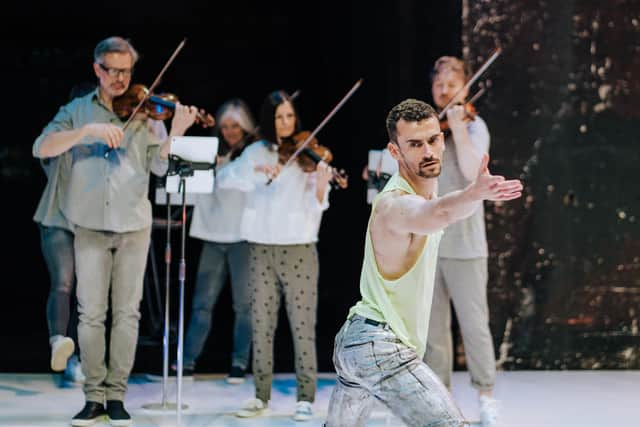Impulse: New Scottish Ensemble project mixes music and movement
I mean, the party after the first show is still being talked about now.” Violinist Jonathan Morton, Scottish Ensemble artistic director, is fondly (perhaps blearily) remembering the unveiling of Goldberg Variations: ternary patterns for insomnia, the string group’s collaboration with Swedish dance company Andersson Dance back in 2015.
It’s been a phenomenally successful show, and “show” really is the right word: Scottish Ensemble players joined the dancers in a physical interpretation of the music, while still playing it live. From Sweden and Scotland, it’s toured right across the world. “I think we just did our 50th show,” Morton continues. “It seems to touch people – wherever we’ve done it, in the USA or Europe or Asia, we get such an amazing reaction from audiences.”
Advertisement
Hide AdAdvertisement
Hide AdWhich makes a fresh collaboration between the two groups – or at least between the Scottish Ensemble and ternary patterns’ choreographer Örjan Andersson – all the more exciting. Impulse: Music in Motion brings together music by Tchaikovsky and Shostakovich, and gets its first outings in Scotland in early March. This time round, however, things are a bit different.
“Having done Bach’s Goldberg Variations, we wanted to explore working outside of a dance space – almost bringing dance into the concert hall,” Morton explains. “We wanted to start from the perspective of a concert, but then add things to it.” Those additional things, he thinks, will accumulate as the project itself develops. “We’re doing what we’re calling previews in Scotland, then we take it to London next year where we’ll be able to build on it further, and we’re hoping to build it again over time. It might end up with tons of things in it.”
For now, however, the focus is very much on the music, and on expanding the natural sense of theatre and movement that’s already present – perhaps implicitly – in a classical concert into something more overt. Morton has chosen two very different pieces. Tchaikovsky’s Serenade for Strings is gloriously lyrical and romantic, though not without its darkness, and certainly full of the spirit of the dance. Shostakovich’s Chamber Symphony, on the other hand, is an orchestral expansion of his Eighth String Quartet, one of his most personal creations from the dark days of Soviet oppression, in which the composer stares unflichingly at trauma, anger and despair. (It’s clearly a piece the Ensemble musicians feel passionately about: it’s also the subject of a video performance in collaboration with Glasgow production company Forest of Black, watchable on YouTube.)
“I think it’s really important to present these really iconic pieces, works we think we know really well, but in a new way,” Morton says. “The Shostakovich is maybe something we’re closer to now in terms of its resonances, but there’s so much passion and turbulent undercurrents in the Tchaikovsky too.”
One quality that unites both works – and the project’s overall theme – is movement. “They’re both very physical pieces,” Morton agrees, “in terms of their sheer energy. I’m hoping we’ll be able to make that physicality more explicit and apparent on stage. We’ll also be doing the whole show from memory – there won’t be any sheet music or iPads in sight.” But that, he believes, in itself encourages an entirely fresh relationship between the musicians and the music, and between the audience and what they’re hearing and seeing.


And despite the success of the Scottish Ensemble’s earlier Bach project, the big question behind the new dance collaboration is: why? Is it about forging new connections with artists in complementary disciplines, or even rethinking what a classical concert is? Morton isn’t keen on that second suggestion. “I’m a complete believer in acoustic concerts, and I actually think there’s been too much criticism of that format. I hope these projects don’t appear to come from a desire to undermine those kinds of performances – if anything, it’s the other way round. I think for musicians, stepping out of our habitual ways of playing or thinking, we can come across really interesting experiences, which we can take back into performances. I see the relationship as very much complementary.”
Impulse: Music in Motion, RSNO New Auditorium, Glasgow, 8 March; Caird Hall, Dundee, 9 March; Eden Court, Inverness, 12 March; Perth Concert Hall, 13 March, see www.scottishensemble.co.uk